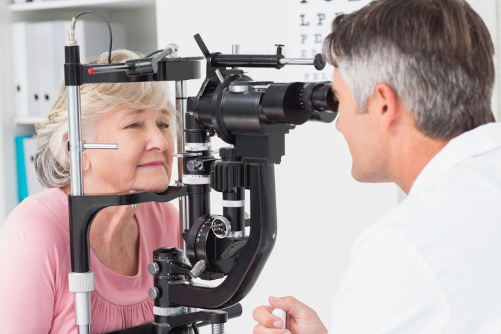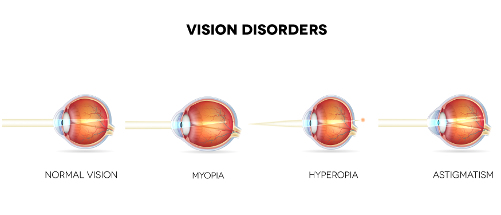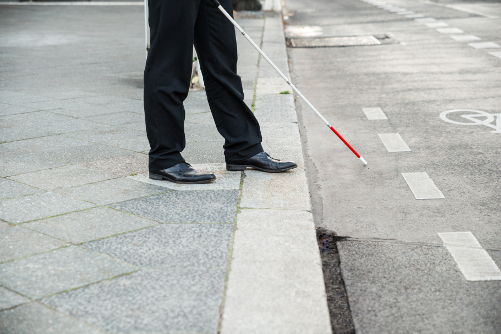8 Common LASIK Myths Debunked
-

LASIK is the most popular refractive surgery in the U.S. for a variety of common vision problems, but there’s still a great deal of misinformation floating around that may be preventing people from seeking treatment. The reality is that LASIK is a safe procedure with a high success rate. The outpatient procedure is quick (approximately 15 minutes per eye) and the vast majority of LASIK patients achieve 20/20 vision, with improved vision experience almost immediately after treatment.
Millions of people around the world continue to rely on eyeglasses or contact lenses, and the cost of LASIK has been steadily dropping. So why aren’t more people opting for a LASIK solution? To answer we have to look at some of the common myths.
Here are eight common LASIK myths:
-
1. Too Old For LASIK

Myth: I’m too old for LASIK.
Fact: The only age restriction related to LASIK is that most surgeons recommend waiting until you’re over the age of 18 for treatment. There is no upper-age restriction for LASIK surgery. There are plenty of people in their 40’s, 50’s and 60’s who have healthy eyes and are perfect candidates for LASIK.
That said, there is a correlation between age and LASIK candidacy. As you get older, your eyes are more at risk for a number of conditions that can prevent you from having LASIK. Macular degeneration, cataracts and glaucoma are three such age-related eye conditions.
Check out our “Am I Too Old for LASIK?” blog post to learn more.
-
2. Long Term Effects

Myth: LASIK is still a relatively new surgery so long-term side effects haven’t really been evaluated.
Fact: LASIK surgery has been commonly performed for more than 25 years with a very high rate of success. Long term studies have yielded positive results, helping to make LASIK the most popular refractive surgery performed today. As technology has improved, so too has treatment, meaning that LASIK has very few complications.
-
3. It Hurts

Myth: LASIK is a painful eye surgery.
Fact: The reality is that LASIK is a quick and essentially pain-free treatment. Numbing drops are applied before treatment to limit any discomfort, and the patient may experience a brief moment of pressure when the corneal flap is created, but that’s it. Most patients are surprised at just how quick and unnoticeable the procedure actually is.
If you are feeling a bit anxious about the surgery, you can always request a mild sedative to take before treatment.
-
4. Nearsighted Only

Myth: LASIK is for nearsighted patients only.
Fact: When LASIK was first introduced it only served as a treatment for nearsightedness, but much has changed since then. LASIK can correct multiple refractive errors in addition to nearsightedness, including farsightedness (hyperopia) and astigmatism. Traditional LASIK cannot address the root cause of presbyopia (age-related farsightedness), but there are alternative treatments like monovision, blended vision and multifocal LASIK that can.
-
5. You Can Go Blind

Myth: Permanent blindness is a potential LASIK complication.
Fact: There isn’t a single recorded case of a LASIK patient going blind as a result of the surgery. The reality is that LASIK treats the surface layer of the eye to reshape the cornea. Complications are rare, often subside over time and are generally correctible.
-
6. LASIK is Too Expensive

Myth: LASIK is not affordable for most people.
Fact: The cost of LASIK has decreased significantly over the years as the technology has improved and the treatment has become more common. In addition to vision insurance coverage, there are a number of financing plans that can help make LASIK affordable for everyone.
-
7. The Results Don't Last

Myth: The effects of LASIK surgery only last a few years.
Fact: The vast majority of LASIK treatments provide permanent refractive correction. In rare occasions, nearsightedness, farsightedness or astigmatism can return after LASIK, though this sort of regression is unlikely. Many practices offer an enhancement surgery at no cost to offset any significant regression. Patients are still at the risk of age-related vision changes such as developing cataracts or macular degeneration, but the refractive correction achieved with LASIK provides long-lasting results.
-
8. Recovery is Slow

Myth: It takes a long time to recover from LASIK surgery.
Fact: You should notice improved vision immediately after the 15 minute procedure is completed, with complete LASIK recovery expected within 24 hours. LASIK patients should not expect significant downtime whatsoever.

